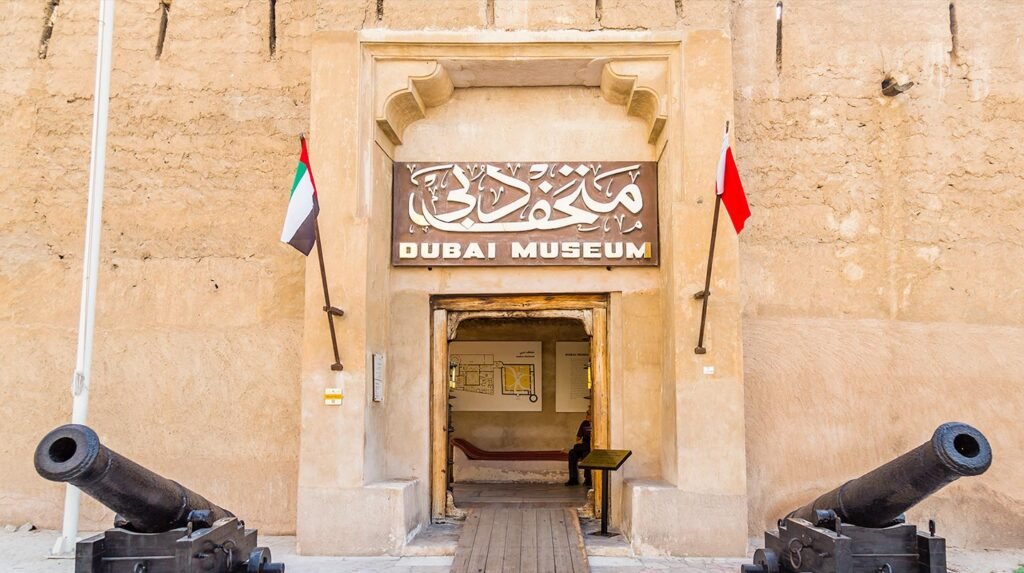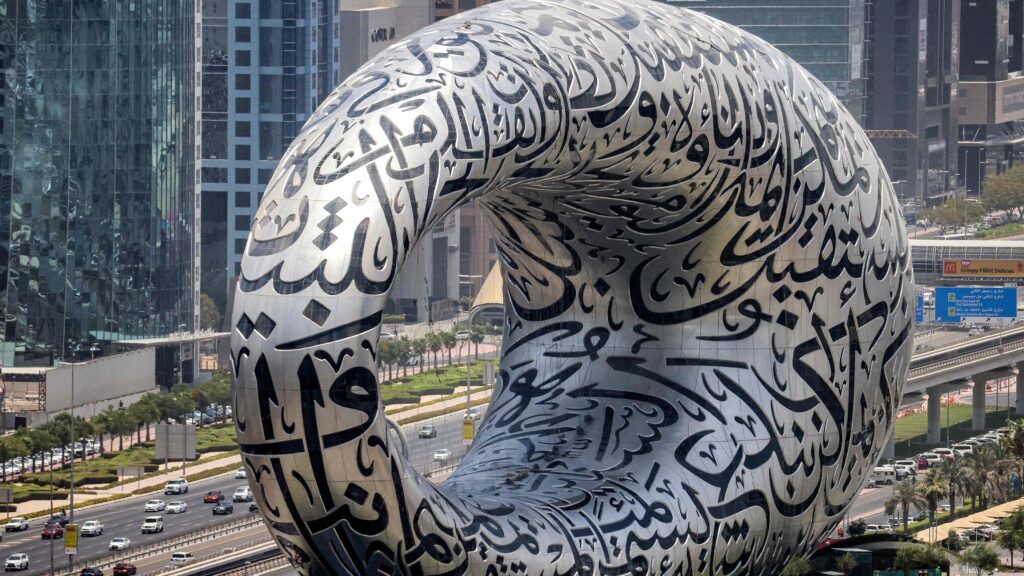Hidden among the towering skyscrapers and flashy buildings of modern Dubai lies a place that tells the story of a very different time. The Dubai Museum, located inside the historic Al Fahidi Fort, offers a glimpse into the city’s humble beginnings before it became a global hub for business, tourism, and luxury.
As you walk through the museum, you’re transported to a time when Dubai was a small fishing village built around trade, pearl diving, and simple desert life. The contrast between what the city is now and what it once was is striking—and that’s what makes this museum so special.
A Fort That Stood the Test of Time
Al Fahidi Fort, where the museum is housed, is not just a backdrop to the exhibits—it’s a piece of history itself. Built in 1787, it is the oldest building still standing in Dubai. The fort served many purposes over the centuries. It was once a royal palace, a defensive stronghold, a prison, and later, an arsenal. In 1971, it was officially turned into the Dubai Museum, right around the time when the United Arab Emirates was formed as a nation.


When you step inside, the thick coral-stone walls and wooden beams immediately make you feel like you’re in another era. The structure has been carefully preserved to maintain its original charm, while also being enhanced with modern lighting and sound effects to bring history to life.
A Journey Through Time
The museum is designed in a way that lets visitors take a journey through Dubai’s past. The exhibits begin with scenes from desert life, showing how the Bedouins survived in harsh conditions. There are models of tents, traditional clothing, and tools used for everyday living. You can see how water was stored in animal skins and how food was prepared without modern appliances.

Next, you’ll find displays about Dubai’s maritime history. Long before oil was discovered, the city depended heavily on fishing and pearl diving. The museum features life-sized boats, nets, and diving equipment, along with detailed explanations of how dangerous and difficult pearl diving was. Divers would plunge into the deep waters of the Gulf, holding their breath for minutes at a time, hoping to find a single pearl. It was risky work, but it brought wealth and trade to the region.

There are also exhibits dedicated to traditional Emirati homes made from palm fronds, early souks (markets), and the tools of old-time merchants. These displays help visitors understand how trade routes through the Middle East and Asia shaped the city’s growth even before the oil boom.
Interactive and Family-Friendly
What makes the Dubai Museum stand out from many others is its use of realistic settings and interactive elements. Many of the exhibits include sound effects, lighting, and even life-size figures that recreate scenes from daily life in old Dubai. It’s not just about looking at artifacts behind glass cases—you feel like you’re stepping into the past.
One of the most popular areas of the museum is the underground gallery. Here, visitors walk through a recreated market street complete with shopkeepers, camels, and the sounds of people bargaining. The immersive experience makes it especially appealing for children and families.
You’ll also come across archaeological finds such as pottery, weapons, and coins that date back as far as 3000 B.C. These items were discovered in excavations around Dubai and show just how deep the roots of this land go.
A Bridge Between Old and New
The Dubai Museum doesn’t just highlight the city’s distant past—it also shows how it grew into the global metropolis it is today. The final sections of the museum feature videos and photos of Dubai’s incredible transformation, including the discovery of oil in the 1960s, the construction of modern landmarks like the Burj Khalifa, and the city’s rise as a top destination for travelers and investors.
This connection between past and present is what makes the museum so powerful. Visitors leave not only with knowledge about Dubai’s heritage but with a deeper appreciation for how far it has come in such a short time.
A Must-Visit for Every Tourist
Though it’s not as flashy as Dubai Mall or as tall as the Burj Khalifa, the Dubai Museum is just as important—if not more so. It gives meaning to the city’s progress and reminds both locals and visitors of the values that built it: resilience, innovation, and community.
Admission to the museum is also very affordable, especially compared to other attractions in the city. This makes it a great place to visit if you’re traveling on a budget but still want to experience something meaningful.
The museum is located in the Al Fahidi Historic District, close to Dubai Creek. This area is also home to other cultural attractions, including the Al Seef promenade, traditional dhow boats, and the bustling souks for gold, spices, and textiles. A walk around the neighborhood before or after your museum visit gives you a richer understanding of Dubai’s character.
Looking Ahead
The city continues to grow and change, but the Dubai Museum remains a vital piece of its identity. As Dubai moves toward the future with high-tech buildings and space exploration dreams, places like the Al Fahidi Fort remind us where it all started.
For anyone visiting the UAE, the Dubai Museum is more than just a stop on a tourist map. It’s a time capsule of culture, struggle, success, and transformation. And that makes it one of the most valuable experiences in the city.
Also read: Inside the Coffee Museum: Secrets Every Coffee Lover Should Know














